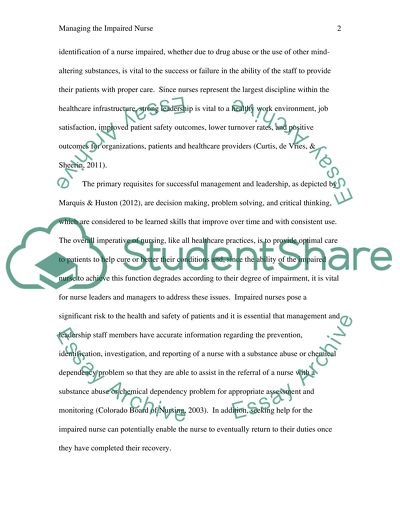Cite this document
(“Managing the Impaired Nurse Research Paper Example | Topics and Well Written Essays - 2750 words”, n.d.)
Retrieved de https://studentshare.org/nursing/1391014-managing-the-impaired-nurse
Retrieved de https://studentshare.org/nursing/1391014-managing-the-impaired-nurse
(Managing the Impaired Nurse Research Paper Example | Topics and Well Written Essays - 2750 Words)
https://studentshare.org/nursing/1391014-managing-the-impaired-nurse.
https://studentshare.org/nursing/1391014-managing-the-impaired-nurse.
“Managing the Impaired Nurse Research Paper Example | Topics and Well Written Essays - 2750 Words”, n.d. https://studentshare.org/nursing/1391014-managing-the-impaired-nurse.


